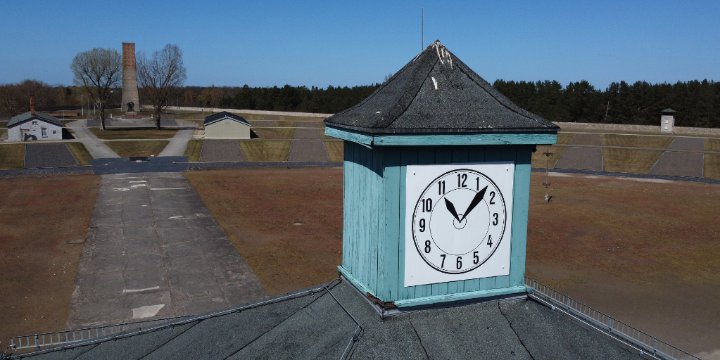When Germany occupied Denmark on April 9, 1940, the Jewish population was approximately 7,500, accounting for 0.2% of the country's total population. About 6,000 of these Jews were Danish citizens. Unlike in other western European countries, the Danish government did not require Jews to register their property and assets, to identify themselves, or to give up apartments, homes, and businesses.
On September 8, 1943, SS General Werner Best, the German civilian administrator in Denmark, sent a telegram to Adolf Hitler to propose that the Germans make use of the martial law provisions to deport the Danish Jews. Hitler approved the measure nine days later. As preparations proceeded, Best, who had second thoughts about the political consequences of the deportations, informed Georg Ferdinand Duckwitz, a German naval attaché, of the impending deportation operation. Before the final order for deportation came to Copenhagen on September 28, Duckwitz, along with other German officials, warned non-Jewish Danes of the plan. In turn, these Danes alerted the local Jewish community.
In the intervening days, Danish authorities, Jewish community leaders, and countless private citizens facilitated a massive operation to get Jews into hiding or into temporary sanctuaries. When German police began the roundup on the night of October 1, 1943, they found few Jews. In general, the Danish police authorities refused to cooperate, denying German police the right to enter Jewish homes by force, or simply overlooking Jews they found in hiding. Popular protests quickly came from various quarters such as churches, the Danish royal family, and various social and economic organizations. The Danish resistance, assisted by many ordinary Danish citizens, organized a partly coordinated, partly spontaneous rescue operation.
Resistance workers and sympathizers initially helped Jews move into hiding places throughout the country and from there to the coast; fishermen then ferried them to neutral Sweden. The rescue operation expanded to include participation by the Danish police and the government. Over a period of about a month, some 7,200 Jews and 700 of their non-Jewish relatives traveled to safety in Sweden, which accepted the Danish refugees.
Guide for Library Research on The Holocaust

guides.lib.jjay.cuny.edu



